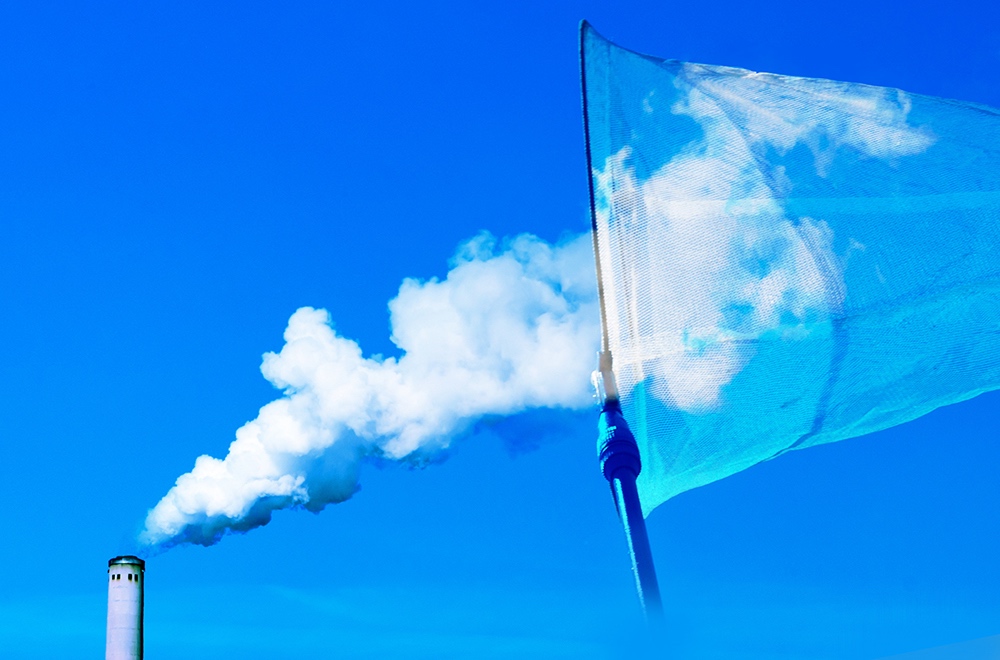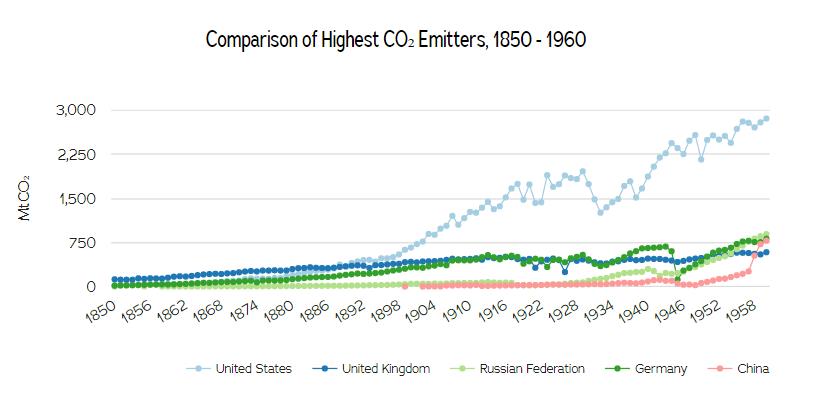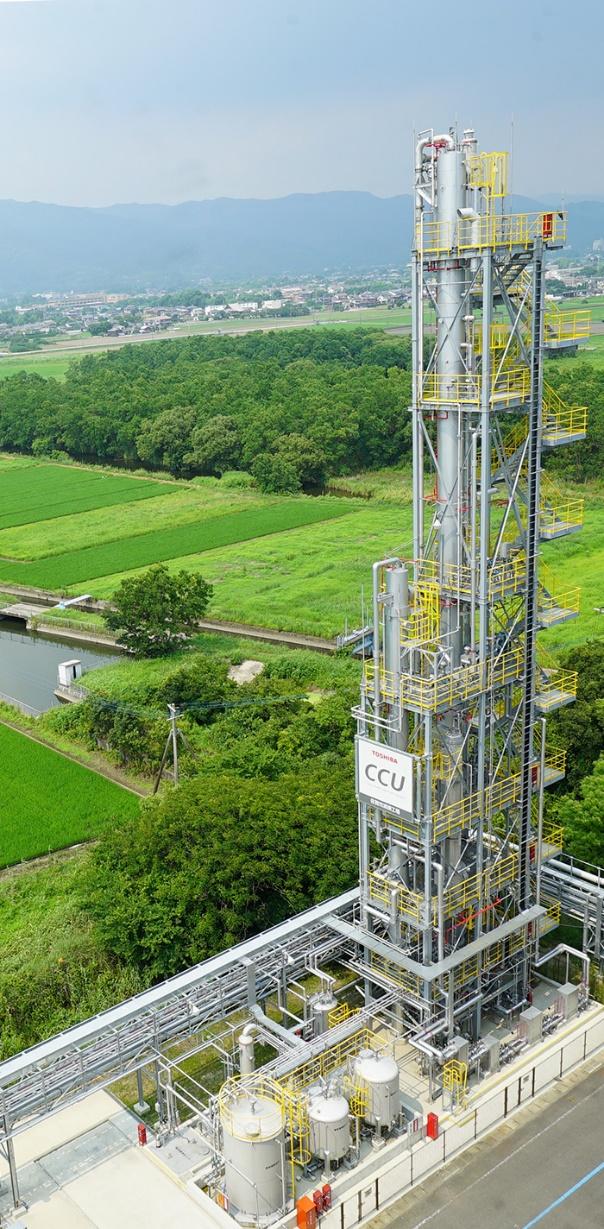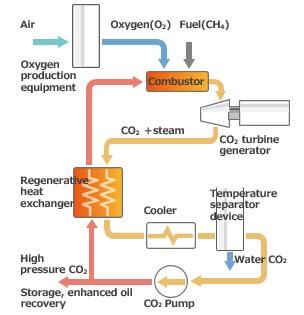
He left his grandfather, he left his grandmother ... But he could not get away from Toshiba's technological solutions! [sounding uplifting music from G. Sviridov's suite “Time, forward!”] ”. We are talking about carbon dioxide (CO2), which is formed as a result of almost any industrial activity, bringing the climatic apocalypse predicted by scientists due to the "greenhouse effect". This time we will talk about technologies that allow not only to "catch" CO2 at the exit, but also to turn it into a recyclable material for agriculture, energy and even to save the planet's climate.
Gathered somehow a Frenchman, an Englishman and a Swede
In 1824, the French scientist Joseph Fourier compared the Earth to a box with a glass lid: when the sun's rays fall on it, the inner surface of the box heats up as the heat cannot leave it. Under the "cover" it is necessary to understand the atmosphere, and Fourier theoretically proved that the climate on the planet depends on this "cover".
35 years later, the English physicist John Tyndall, inspired by the recent discoveries of the ice ages, investigated the effect of gases on thermal radiation. At that time, people thought that gases were completely permeable to heat radiation. The scientist decidedtest this hypothesis in the laboratory one by one on the main atmospheric gases (oxygen, nitrogen, hydrogen), and it was confirmed. As he was about to leave, he fixed his gaze on a completely new then laboratory gadget - the Bunsen burner. She ran on coal gas, which was also called "lamp gas" because it was used in lanterns.

The Bunsen burner was operated on a variety of gas mixtures, including methane, carbon monoxide and hydrogen. Source: Daderot / Wikimedia Commons
Having tested coal gas for thermal conductivity, Tyndall found that it prevents heat radiation, and then found that carbon dioxide, in combination with water vapor, also blocks it.
Although the Bunsen burner - one of the fruits of the industrial revolution - almost directly "hinted" to Tyndall about the possible consequences of this revolution for the climate, it was only half a century later that the Swedish scientist Svante Arrhenius managed to come to certain conclusions - in 1896 he calculated that a decrease in carbon dioxide content by half the atmosphere could lead to ice ages and, accordingly, burning fossil fuels on the planet could backfire.
True, at that time Arrhenius's assumptions seemed fantastic. The problem was returned only in the middle of the 20th century, when carbon dioxide emissions exceeded the level of the 19th century many times over. In the 1960s, models were first developed proving that already in the 21st century, due to carbon dioxide in the atmosphere, the planet's temperature will rise by several degrees.

The rise in carbon dioxide emissions is a direct consequence of industrialization in developed countries, and then in the USSR and China. Source: CAIT Climate Data Explorer, World Resources Institute (WRI)
In the meantime, scientists conducted holivars about whether the out of control CO2 would kill the climate we are used to and how exactly it would do it, oilmen came up with CCS - a technology for capturing and storing carbon. In the 1950s, carbon dioxide began to be used in fields where oil is difficult to separate from various impurities: unlike other gases, CO2 dissolves well in oil and formation water, which leads to an increase in their volume and the expulsion of residual mobile oil. In the 1970s, scientists began to thinkon the use of carbon dioxide, which is formed during the combustion of associated gas in flares. This is how the post-combustion capture technology was born. Nowadays, it is increasingly used for environmental reasons, and not only in oil production. How? We will tell you on the example of Toshiba projects in Japan and the USA.
Absorb it
Not everyone follows the example of oil workers and uses by-product carbon dioxide. For example, thermal power plants simply do not need it, like many other industries, so carbon dioxide enters the atmosphere. According to the International Energy Agency, in 2019, the total mass of CO2 emissions associated with energy production was 33 billion tonnes.

While in developed countries CO2 emissions in the energy sector stagnated (some of the bars below the white line), in developing countries they only increased (above the white line). Source: International Energy Agency (IEA)
To reduce wasteful emissions and give carbon dioxide a second life, we usesecondary carbon capture and storage technology. It is based on chemical absorption. Since the emissions consist of a gas mixture, in order to capture exactly CO2, we run an aqueous solution of amines into the absorber with the “exhaust” of the thermal power plant. It is able to selectively capture CO2 at a certain temperature and, conversely, “release” it at a different temperature in the stripper.

In this way, you can "catch" carbon dioxide at different types of stations: coal, oil, gas. Source: Toshiba Energy Systems & Solutions
In September 2009, Toshiba builta pilot plant for separating and capturing CO2 at the 50 MW Mikawa Power Plant located in Omuta City, Fukuoka Prefecture, Japan. Here 10 tons of CO2 were captured per day. For Toshiba, this was a pilot project to fine-tune the technology for capturing carbon dioxide on an industrial scale.
Just 35 kilometers from the Mikawa power plant is the city of Saga, which since 2013 has taken a course to minimize emissions of harmful substances into the atmosphere. After learning about carbon capture technologies at the Omut pilot plant, Saga officials came in person for details. And, impressed by what they saw, they wanted to use such an installation at a waste incineration plant in their city.
To do this, the technology had to be adapted, and Toshiba installed a small trial system to capture 10 to 20 kg of CO2 per day from the waste gas generated from the waste incineration. Over the course of 8000 hours of operation, the technology was explored as well as the commercial use of CO2 capture. The absorbent used was alkaline amines, which are well suited for capturing CO2 in the waste gas mixture, where carbon dioxide is only 8-14%. This small trial system performed well, and in August 2016, a large carbon capture facility built by Toshiba went into commercial operation.

The Saga incinerator collects 10 tons of CO2 every day. The high-purity carbon dioxide is then sent to the algae farm. Carbon dioxide with light works as fertilizer, increasing yields by 2-3 times. Source: Toshiba Energy Systems & Solutions
In addition, carbon dioxide is used in the food industry (preservative E290), the production of fire extinguishers, as well as a refrigerant in freezers, etc. Thus, the world's first incineration plant appeared in Saga, harmful emissions which managed to commercialize. But we did not stop there, deciding to bring to life an ecological concept that is still considered fantastic.
Bioenergy in a good sense of the word
There is a concept of cleaning the atmosphere from carbon dioxide, which is called "bio-energy with carbon capture and storage" (in English Bio-Energy with Carbon Capture and Storage, BECCS). Do not rush to grab the pistol: extrasensory perception and biofield have nothing to do with it - we are talking only about an exotic variation of UHL.
It is assumed that it is possible to reduce the amount of CO2 in the atmosphere by acting against this gas on two fronts: on the one hand, to grow plants that absorb CO2 during photosynthesis, on the other hand, to burn these plants, and the resulting CO2 is buried in the deep layers of the earth's crust, or transform into something useful. For example, fertilizer for a new batch of plants. The debate around this theory, perhaps, is even more fierce than about global warming itself, so we will not go into their essence, but only tell about our pilot project in this “correct” bioenergy.
Simultaneously with the work in Saga, the thermal power plant in Omut was refurbished. In 2017, it was switched from coal to biofuel. Hundreds of thousands of tons of Indonesian shells from the kernels of the oil palm used to obtain palm oil began to be sent to the furnace of this station. The Omut biofuel plant will be the first power plant in the world to use BECCS technologies - it will be able to capture more than 500 tons of carbon dioxide per day, which is more than half of all CO2 emissions from the plant.
Either liquid, or a vision
Recycled carbon dioxide itself can become a source of energy, moreover, it is environmentally friendly. To do this, it must be brought to a supercritical state, that is, to the aggregate form of a substance, in which it has the properties of both a gas and a liquid. CO2 is relatively easy to convert to this state - it requires a temperature of 31 ° C at a pressure of about 7.4 MPa (73 atm).
Although supercritical CO2 looks like a liquid in appearance, it is correctly called supercritical fluid (SCF). Source: YouTube channel Flachzange1337
In 2018, Toshiba, together with the American company NET Power, successfully tested a commercial-scale combustion chamber at a 50 MW power plant in La Porte, Texas, USA, designed to confirm the operation of a supercritical CO2 power generation system. ... Toshiba has been developing the turbine and combustion chamber since 2012.
The CO2 supercritical fluid power generation system uses natural gas and is more efficient than other natural gas systems and captures high pressure CO2 while eliminating nitrogen oxides and other pollutants.
It works like this: SCF CO2, natural gas and oxygen are fed into the combustion chamber. By burning this mixture, the chamber generates a gaseous working fluid, consisting mainly of carbon dioxide and steam. It is transferred under high pressure and high temperature to a turbine, where it rotates the shaft and generates electricity.
The exhaust gas from the turbine is then cooled and split into two parts - water and CO2. The latter is compressed again and returned to the combustion chamber, starting the cycle anew. Excess CO2 can be buried underground or transferred to an external consumer, and clean water can be discarded.

The scheme of the installation using the supercritical fluid CO2. Source: Toshiba Energy Systems & Solutions
Don't smoke here!
So, we found out that carbon dioxide is recyclable, after which it can be directed to the needs of agriculture, industry, energy. Accordingly, by preventing it from entering the atmosphere, we not only reduce the greenhouse effect, but also make a profit. Simply put, carbon dioxide is a potential source of income.
Where is a lot of this gas produced? For example, in Russia: according to the oil company BP, in 2018 Russia ranked fourth in the world in terms of greenhouse gas emissions (1.55 billion tons per year), behind only China, the United States and India in terms of this indicator and ahead of Japan by one line ... Is this not a reason to start "catching" CO2 on an industrial scale, when the price of oil sets negative records?